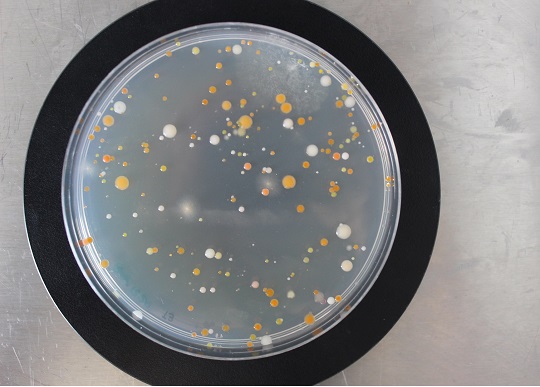Users
Social media
- More details here...
- Address
Parc Científic de la Universitat de València C/
Catedrático Agustín Escardino, 9
46980 Paterna (Valencia) Spain - Email:
iu.i2sysbio@uv.es - Phone:
(+34) 963544810
- Address
Links
They demonstrate the similarity between the microbial communities that inhabit solar panels in Antarctica and the Arctic
Investigation
They demonstrate the similarity between the microbial communities that inhabit solar panels in Antarctica and the Arctic
A research group from the Institute of Integrative Systems Biology (I2SysBio) of the University of Valencia/CSIC has carried out a comparative analysis of two microbial ecosystems on the surface of solar panels, both at the North and South Poles, and concludes that the two ecosystems, despite the great geographical distance that separates them, present very similar microbial communities and in which the adaptation of these microorganisms to the phenomena of irradiation and desiccation. It is the first time that a study of these characteristics has been carried out in two locations so geographically distant from each other.

In the work, published in the journal Environmental Microbiology Reports, genome sequencing techniques are used on the one hand to understand the composition of the microorganisms. On the other hand, it has been described which microorganisms can be cultivated in the laboratory, for subsequent analysis and applications.
“The similarity observed in these microbial communities reinforces a famous mantra of microbial ecology by Baas Becking, a well-known microbiologist from the beginning of the 20th century, who said that everything is everywhere, but the environment selects”, explains Kristie Tanner, researcher at I2SysBio and first signatory of the article.
Jose Manuel Martí, Esther Molina, Juli Peretó and Manuel Porcar have also participated in the study on behalf of I2SysBio; as well as Josabel Belliure from the inter-university department of Ecology at the University of Alcalá, and Mar Fernández from the Norwegian Polar Institute in Tromsø.
In the article "Polar solar panels: Arctic and Antarctic microbiomes display similar taxonomic profiles", the research group has analyzed a total of 14 panels between January and May 2017, 3 from Decepción Island, 6 from Livingston Island (both at the South Pole) and 5 plates of Tromsø (North Pole).
Tromsø is the largest urban area on the northern coast of Norway and is located 350 km north of the Arctic Circle. It has a subarctic climate, with average temperatures ranging between 0.9 and 23.6 ºC in winter and between 5.3 and 12.4 ºC in summer. The South Shetland Islands are an archipelago of islands located north of the Antarctic Peninsula. The average monthly temperature is between 23.1 and 21 ºC from March to October, when the sea around the islands is enclosed due to the presence of ice, and slightly warmer from November to February, with temperatures varying between 21.7 and 0.5 ºC.
Research group
The research group, led by Manuel Porcar and located in the I2SysBio focuses its studies mainly on ecosystems that are characterized by extreme conditions (desiccation, extreme temperatures, high salinity or the presence of polluting compounds, among others). The objective of these studies is twofold. On the one hand, characterize, through sequencing techniques, the communities that inhabit these extreme ecosystems. On the other hand, look for microorganisms that may be useful in certain industrial processes or biomedical applications due to their abilities to resist the extreme conditions to which they are subjected. Examples of this second objective are carotenoid-producing microorganisms that protect from solar radiation and that live in environments with high irradiation or caffeine-degrading microorganisms that live in environments rich in this compound.
This research has been sponsored by the Ministry of Economy and Competitiveness (project Helios BIO2015-66960-C3-1-R co-financed with funds FEDER).
Article:
Tanner, K., Martí, J. M., Belliure, J., Fernández-Méndez, M., Molina-Menor, E., Peretó, J. and Porcar, M. (2017), Polar solar panels: «Arctic and Antarctic microbiomes display similar taxonomic profiles». Environmental Microbiology Reports. Doi: 10.1111/1758-2229.12608
Captions:
(Gallery).One of the solar panels from which the team collected samples in Antarctica
(Cover and gallery). From left to right: Manuel Porcar, Kristie Tanner, Esther Molina and Juli Peretó
Images:





